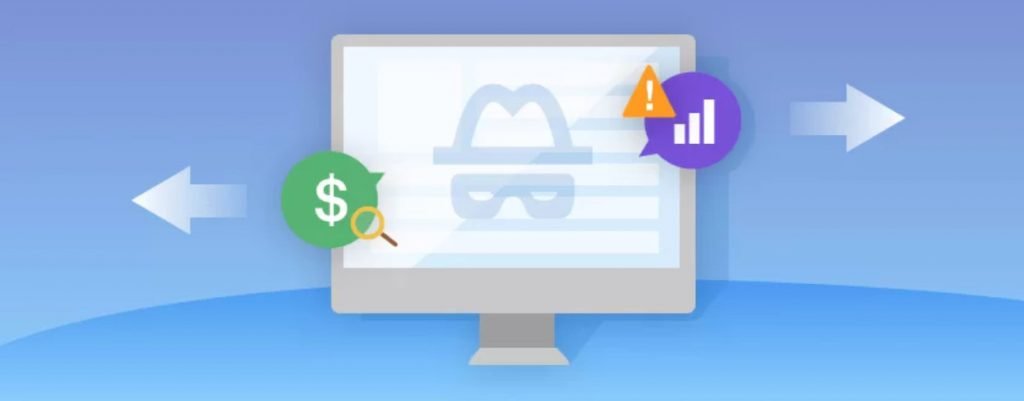The Internet is an integral part of our lives today, which means that almost everyone faces the threat of malware infection. Over time, malware has proliferated, and today spyware is considered the biggest threat to the security of our digital devices. At the same time, the ability to recognize spyware and protect ourselves from the most common types of malware has become a critical component of our Internet security.
Nowadays, most people use the internet even in their workplaces, which only adds risks and dangers. Spyware is one such danger. There are several types of spyware and it’s good to know what you might encounter.
Three types of spyware:
- Adware
- Keyloggers
- Browser hacks
Spyware, along with many other types of malware, can be devastating to both business and personal life. Speaking specifically about spyware, it can track any digital movement and then redirect URLs to malicious websites. Needless to say, the concern about any kind of malware is entirely justified.
If you have not yet become a victim of malware, then you still have a chance to protect yourself and never fall into the clutches of cybercriminal enemies.
Ways such as backing up your computer, installing antivirus software, avoiding questionable websites, and using VPNs from trusted VPN providers can go a long way in protecting your data from being stolen by intruders.
Finally, keeping your eyes and ears wide open and learning how to prevent and recognize malware on your device is something that could save you a lot of headaches down the road.
#1 – Slow down
If you notice that your device is suddenly sluggish or slow to respond to requests, this immediately requires further investigation. However, does a slow system automatically become a victim of cybercrime? Well, not really.
As a rule, background processes are busy with other tasks. That being said, if you use a lot of programs, expect poor performance. Also, while your VPN won’t slow down the internet, other apps can.
But if it is not, there is a good chance that your device has been infected and is now silently executing the commands of the malware. So what can you do about it?
Well, the first thing you should do if you have doubts that your device is infected is to scan it with antivirus software. Some antiviruses can both detect threats and remove them from your device.
Second, you must back up your files and folders. Most attackers aim to steal your data, so if you think you have been the victim of such an attack, there is a good chance that these files and folders may be lost during the recovery process. So be sure to make backups with backup software.
Finally, if you’re connected via public Wi-Fi, be sure to disconnect as soon as possible to prevent data from being passed on to a criminal. And, if an attack occurs on your device, contact your ISP.
#2 – Your activities are spontaneously interrupted by ads and pop-ups
Unexpected pop-ups and ads that appear on your screen are a typical sign of a malware infection, better known as spyware. As you already know, spyware is designed to collect and steal people’s sensitive data without their knowledge.
The scariest thing about this malware is that it can be disguised as a real program, but its purpose is to track your web browsing data and collect passwords and other personal information. Therefore, we strongly recommend that you never open suspicious pop-ups and add and install an ad blocker and antivirus software.
Plus, free apps can be another way to trap you. When you download a program from the Internet, it’s very easy to scroll through or even skip the terms and conditions page they direct you to.
In the process of clicking “Next” to get to the finish line, you may have agreed to accept a new default browser or even open unwanted websites filled with viruses. So the next time you download something for free, be extra careful. Ideally, it would be better to avoid any of these practices altogether.
#3 – Your contacts are getting weird messages from your accounts
If your family and friends have ever told you that strange messages are coming from one of your accounts, this is a big red flag indicating that you have been a victim of some kind of malware. You must first check if these messages were actually sent from your account by looking at the “sent” messages.
If you notice these messages on your device, please log out of all your devices immediately, including phones, laptops, and computers.
The next step is to change the password. Choose a really strong password that contains uppercase and lowercase letters, as well as symbols and numbers. The last thing you need to do is set up 2-Step Verification as an extra layer of security.
If you’re in a public place connected to public Wi-Fi and doing all of this, be sure to use a VPN. With premium VPN providers, the chance of someone hiding in the shadow of your device is next to impossible.
Remember that you must always be on your guard to protect yourself from malware attacks.

